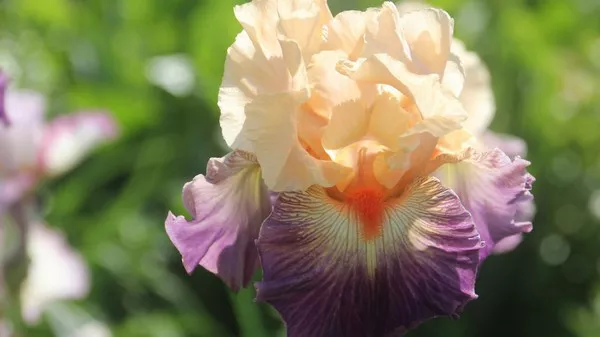Passion flowers, with their mesmerizing beauty and intricate blooms, have enchanted gardeners and nature enthusiasts for generations. Growing these captivating vines from seeds is a rewarding and fulfilling experience that allows you to witness the entire life cycle of these remarkable plants. In this article, we delve into the art of planting passion flower seeds, exploring each step in detail to ensure successful germination and healthy growth. Additionally, we will touch upon selecting the right seeds, preparing the soil, and caring for passion flower plants throughout their growth journey.
Selecting Passion Flower Seeds
1. Choosing the Species: Passion flowers belong to the Passiflora genus, which comprises hundreds of species. Each species displays unique flower forms and colors. Before purchasing seeds, consider the specific traits and appearance you desire in your passion flower vine.
2. Sourcing Reliable Seeds: Obtain passion flower seeds from reputable suppliers or specialized nurseries to ensure the seeds’ quality and authenticity. Fresh seeds are more likely to have higher germination rates.
Pre-Planting Preparation
1. Stratification: Some passion flower seeds benefit from stratification, a process that simulates natural winter conditions to break seed dormancy. Place the seeds between moist paper towels in a plastic bag and refrigerate them for a few weeks before planting.
2. Scarification: Passion flower seeds with hard seed coats may require scarification to improve germination. Gently file or nick the seed coat with a nail file or sandpaper to create small openings, allowing water to penetrate the seed more easily.
3. Soaking: Soaking passion flower seeds in water for 24 hours before planting can enhance germination rates. Use room-temperature water and change it once or twice during the soaking period.
Planting Passion Flower Seeds
1. Timing: Plant passion flower seeds in late winter or early spring, as this allows the seeds to benefit from the warming temperatures and longer daylight hours of the growing season.
2. Soil Selection: Choose well-draining soil with a slightly acidic to neutral pH (around 6.0 to 7.0). Rich and loamy soil provides essential nutrients for healthy seedling growth.
3. Container or Garden Bed: You can start passion flower seeds in seed trays or small pots indoors or directly sow them into prepared garden beds outdoors. Starting seeds indoors gives you better control over environmental conditions.
4. Planting Depth: Sow the seeds about 1/4 inch deep in the soil. Lightly cover the seeds with soil and gently pat down the surface.
5. Watering: Keep the soil consistently moist but not waterlogged during the germination process. Using a spray bottle or a gentle watering can help prevent disturbing the seeds.
Germination and Early Growth
1. Warmth and Light: Place the seed containers in a warm location with plenty of indirect sunlight. A consistent temperature of around 70-80°F (21-27°C) is ideal for successful germination.
2. Germination Time: Passion flower seeds typically germinate within 1 to 3 months, depending on the species and environmental conditions.
3. Transplanting: Once the seedlings have grown a few inches tall and developed a few sets of true leaves, they can be transplanted into larger pots or directly into the garden.
Caring for Passion Flower Plants
1. Sunlight: Passion flowers thrive in full sun to partial shade. Choose a location that receives at least 6 hours of sunlight daily.
2. Watering: Established passion flower plants prefer regular watering but can tolerate short periods of drought. Provide water when the top inch of soil becomes dry.
3. Support and Training: As passion flower vines grow, they need support to climb and twine. Provide a trellis, fence, or other support structure for the vines to climb.
4. Fertilizing: Use a balanced fertilizer or one specifically formulated for flowering plants. Follow the manufacturer’s instructions for application rates and frequency.
5. Pruning: Regular pruning helps maintain the shape and size of the passion flower vine. Prune in late winter or early spring before new growth begins.
6. Pests and Diseases: Keep an eye out for common pests like aphids and spider mites. Promptly address any pest or disease issues with organic solutions.
Reaping the Rewards of Passion Flower Growing
1. Blooming Period: Passion flowers typically bloom in late spring to early summer, producing stunning and exotic flowers that showcase intricate patterns and vibrant colors.
2. Attracting Pollinators: Passion flowers are magnets for pollinators, including bees, butterflies, and hummingbirds, making them valuable additions to any garden.
3. Fruit Development: Some passion flower species produce edible fruits called passion fruits. These fruits are not only delicious but also visually striking with their unique appearance.
Conclusion
Planting passion flower seeds is a journey that offers a unique connection with nature and the marvels of the plant world. With the right preparation, care, and attention, you can witness these enchanting vines emerge from humble seeds and transform into magnificent blooming displays. The joy of nurturing passion flower plants extends beyond their aesthetic beauty, as they play a vital role in supporting pollinators and adding a touch of exotic allure to your garden. By embracing the art of growing passion flowers, you become a steward of nature’s elegance, and the rewards are truly worth the effort.


